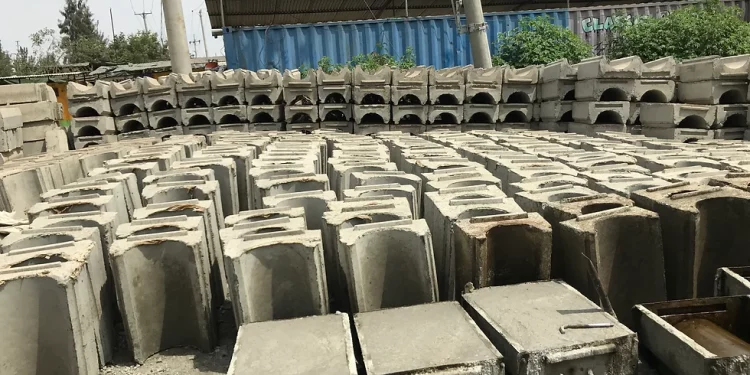Inverted Block Drainage (IBD) refers to precast concrete blocks specifically designed for stormwater drainage. These blocks are manufactured under controlled conditions to ensure uniformity and quality in the final product. Once constructed on-site, they are typically left open at the top to effectively manage water flow.
The dimensions and specifications for IBD are determined by civil engineers based on calculations regarding the expected volume of water to be handled in a particular section. One alternative to IBD is the shallow drain. Shallow drains have the advantage of doubling as pathways when water is not present. However, their limited depth poses a risk of water overflow, leading to potential flooding in adjacent areas.
IBD is preferred in scenarios with high volumes of surface runoff and where access routes are narrow, as it prioritizes depth over width to manage water more effectively.
For main access road drainage, IBD proves to be particularly beneficial. The installation process begins with casting a 50mm thick concrete blinding layer. This provides a stable base for placing the precast blocks. The blocks are then joined using a cement-sand mortar mix, ensuring a robust and durable construction.
The choice of IBD over other drainage methods highlights its capability to handle large water volumes efficiently, thus preventing flooding and maintaining the integrity of adjacent areas. This method is especially critical in urban settings where effective stormwater management is essential to prevent waterlogging and infrastructural damage.
Inverted Block Drainage (IBD) offers a reliable and effective solution for managing stormwater runoff, especially in areas with limited space and high-water volumes. Its structured design and methodical installation process ensure long-term durability and functionality, making it a preferred choice for modern drainage systems.


















